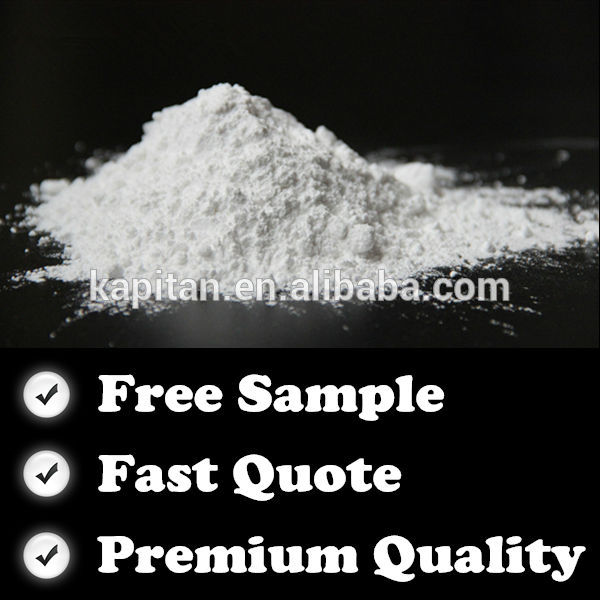
|

CAS Number: 7758-16-9
Molecular Formula: Na2H2P2O7
Molecular Weight: 221.90
Appearance: White Powder
Grade: Food Grade
Functions Of Phosphates
Chemical leavening - Phosphates play an important role in chemical leavening systems by reacting with baking soda to spur leavening in a variety of products, including cookies, tortillas and pizza. This reaction produces CO2 and causes Bakery Foods to rise. Common phosphates used in chemical leavening include sodium-based phosphates such as sodium aluminum phosphate (SALP) and sodium acid pyrophosphates (SAPP), and calcium-based phosphates.
Phosphates provide ideal acid reactions in chemical leavening systems because phosphates affect solubility and the rate of reaction. Sodium-based phosphates commonly are used for their versatility and abilities to offer time-delayed leavening, which allows bakers to delay the rate of reaction.
SAPPs are the most common phosphates used in chemical leaveners. There are many different grades of SAPPs, and the grades are classified by the percent of CO2 that is released at the end of an eight minute dough rate of reaction, one phosphate manufacturer says.
Calcium-based phosphates don’t provide as much middle ground when determining reaction times. These phosphates tend to be very fast or very slow acting, one phosphate supplier says.
Preservative systems - In many bakery food formulas, including chemically leavened and yeast-leavened products, phosphoric acid is used to control pH. Monocalcium phosphates help lower pH and represent one of the few compounds that control rope bacteria in bakery foods, one phosphate supplier says. These Preservatives are used in combination with other preservatives, such as sorbates and propionates. In these types of systems, “monocalcium phosphates lower the pH in order to get efficacy from the preservatives,” a phosphate supplier says.
Dough conditioning/texture - High-volume bakers can affect the processing characteristics and final crumb of a bakery food by using phosphates. In dough conditioning situations, calcium phosphates optimize dough pH, which allows “calcium phosphates to interact with proteins in a system,” one phosphate supplier says. This application is ideal for yeast-leavened products.
Sodium reduction - Recent health crazes among Americans have singled out many “bad” ingredients, including sodium. However, sodium-based phosphates play a major role in chemical leavening systems.
Manufacturers are scrambling to release new calcium-based phosphates to replace sodium-based phosphates in products aimed at health-conscious consumers. Unfortunately, replacing sodium-based phosphates with calcium-based phosphates is difficult in many applications. Calcium-based phosphates generally react quickly, releasing as much as 60% of the CO2 in a very short period of time, one phosphate supplier says. This functionality makes 1:1 replacement of sodium-based phosphates difficult.
However, one manufacturer’s new calcium-based ingredient technology promises a 1:1 substitution for SAPPs in many bakery food formulas, including layer cakes, microwaveable cakes, pound cakes, biscuits, scones, muffins and pancakes. The product uses a chemical mixture of calcium acid pyrophosphate and monocalcium phosphate. Besides eliminating a sodium-laden ingredient, the product also has 18% calcium.
Mineral fortification - Boosting calcium content is only one instance where phosphates are used to fortify a formula with nutritionally rich minerals. “You can add these ingredients without affecting anything else in the formula,” one phosphate supplier says. “We work with customers to find out what their entire system is made up of, and then we come up with a system that won’t interfere with anything in the formula.”
The supplier says that calcium is the most commonly requested mineral enrichment, followed by potassium and magnesium. When these minerals are delivered with a phosphorous system, some studies show that the phosphorous promotes improved absorption of minerals.
We offer solutions with phosphates to food industry with benefits of water retention, prolong shelflife and maintaining of essential nutrients. We integrate our technology, experience and quality assurance system to provide the best products and service at the lower cost to our customers worldwide. Quality and safely are crucial in the food industries and are the key control points in our enterprise.
Our Certificates:
We achieve our goals through our strong ethics and our core values
Advantages:
| CAS No.: |
7758-16-9
|
Other Names: |
Disodium dihydrogen diphosphate
|
MF: |
Na2H2P2O7
|
| EINECS No.: |
E450i
|
FEMA No.: |
N/A
|
Place of Origin: |
Jiangsu China (Mainland)
|
| Type: |
Raising agent, buffering agent, sequestrant
|
Brand Name: |
KAPITAN
|
Model Number: |
SAPP,Food Additive
|
